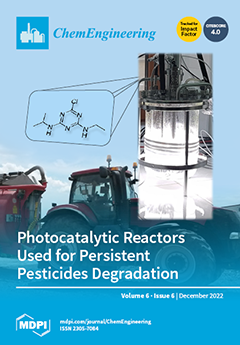Open AccessArticle
The Effectiveness of Polyvinylidene Fluoride Membranes Modified with Poloxamer and Single/Multi-Walled Carbon Nanotubes for Lactalbumin Purification
by
Nasrul Arahman, Widia Puspita Sari, Indah Maulana Sari, Cut Meurah Rosnelly, Sri Mulyati, Afrillia Fahrina, Muhammad Roil Bilad, Poernomo Gunawan, Mehmet Emin Pasaoglu, Oğuz Orhun Teber, Vahid Vatanpour, Ismail Koyuncu and Yusni Yusni
Cited by 2 | Viewed by 1647
Abstract
The application of separation technology using ultrafiltration/nanofiltration membranes for protein purification and concentration has grown rapidly in the last decade. Innovations to synthesize membranes with properties and performance that suit the characteristics of the feed solution have been and will keep developing. This
[...] Read more.
The application of separation technology using ultrafiltration/nanofiltration membranes for protein purification and concentration has grown rapidly in the last decade. Innovations to synthesize membranes with properties and performance that suit the characteristics of the feed solution have been and will keep developing. This study aims to examine the strategies to improve the performance of the Polyvinylidene Fluoride (PVDF) membrane for lactalbumin protein isolation. The PVDF polymer membrane was modified by adding Poloxamer 188 (Po1) copolymer and a combination of two types of nanocarbons, i.e., single-walled carbon nanotubes (S-CnT) and multi-walled carbon nanotubes (M-CnT). The following membrane characteristics were examined: mechanical properties, morphological structure, porosity, elemental composition and functional groups, and surface hydrophilicity. The membrane’s filtration performance was analyzed in terms of its ability to pass water (flux) and concentrate lactalbumin protein. The results showed that the changes in the membrane morphological structure were clearly visible in the SEM test, which exposed more open membrane pores after adding Pol and S-CnT/M-CnT additives. The mechanical properties of the membrane also increased, as indicated by the increase in the tensile strength from 12.1 MPa to 16.07 MPa. In general, it was found that the composition of the PVDF/Pol/S-CnT/NMP polymer solutions resulted in better filtration performance compared to the membranes made of only the PVDF/NMP polymer solution.
Full article
►▼
Show Figures





